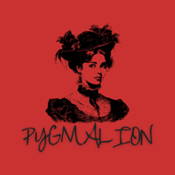
Overview
Synopsis
One rainy, London night, phonetics professor Henry Higgins takes in a flower girl named Eliza Doolittle in an effort to win a bet with Colonel Pickering, an expert in Indian dialects. He bets Pickering that he can teach Eliza elocution and pass her off as a lady to all of London society. Despite many reservations and objections Eliza ultimately agrees to their experiment. Over the course of her education, Eliza’s father, Alfred Doolittle takes his chances with Higgins for money, but this backfires when he unwillingly becomes a well-off, middle-class gentleman thanks to Higgin’s connections with a rich philanthropist. Eliza turns out to be an apt student and easily convinces the ladies at a garden party that she is a mysterious duchess.
Despite her success, Higgins is pompous about his efforts and never truly thinks of Eliza as a lady or his social equal after her stunning transformation. With a proposal from the besotted Freddy Eynsford-Hill lingering in the air, Eliza leaves Higgins to seek her own future.
Show Information
Context
George Bernard Shaw wrote Pygmalion in 1912, drawing inspiration from the classical Greek myth of Pygmalion, the sculptor who fell in love with a statue he had created. Instead of marble, Shaw’s modern-day sculptor is Professor Henry Higgins, who attempts to “mold” the Cockney flower girl Eliza Doolittle into a woman of society through the science of phonetics. Shaw used this transformation story to critique Edwardian class structures, language snobbery, and gender roles, turning a witty
to read the context for Pygmalion and to unlock other amazing theatre resources!Plot
Act One
The play opens on a stormy summer night in London, where rain drives together a cross-section of society beneath the portico of St. Paul’s Church in Covent Garden. A fussy mother and daughter send their hapless son, Freddy, into the downpour to fetch a taxi. In his rush, he collides with a shabby flower girl, knocking over her basket. She scolds him with a sharp Cockney retort—“Nah then, Freddy!”—though it turns out she calls every man “Freddy.”
The crowd becomes suspicious of a
to read the plot for Pygmalion and to unlock other amazing theatre resources!Characters
| Name | Part Size | Gender | Vocal Part |
|---|---|---|---|
|
Lead |
Female |
Non-singer |
|
|
Lead |
Male |
Non-singer |
|
|
Supporting |
Female |
Non-singer |
|
|
Supporting |
Female |
Non-singer |
|
|
Supporting |
Male |
Non-singer |
|
|
Supporting |
Male |
Non-singer |
|
|
Supporting |
Female |
Non-singer |
|
|
Supporting |
Male |
Non-singer |
|
|
Supporting |
Female |
Non-singer |
Songs
A song with an asterisk (*) before the title indicates a dance number; a character listed in a song with an asterisk (*) by the character's name indicates that the character exclusively serves as a dancer in this song, which is sung by other characters.
Monologues
Scenes
Key Terms
An adaptation is a reworking of a story from one medium or cultural context into another, such as turning a novel into a play or updating a classic play’s setting. Adaptations often reinterpret themes, characters, and style for new audiences. They can range from faithful recreations to bold reimaginings.
A traditional London dialect spoken by working-class people, especially in the East End, characterized by unique phonology (like vowel shifts and the dropped 'h' sound), specific grammar, and most notably, Cockney Rhyming Slang. A "true" Cockney is often defined by their birth within the sound of the Bow Bells of St Mary-le-Bow church, making it a strong cultural and social identifier.
The Edwardian Era is a period of British history from 1901 to 1910, named after King Edward VII. While technically defined by his reign, it is often extended to the outbreak of the First World War in 1914, marking the end of the "Beautiful Era" before the world changed forever. It is characterized by the opulence of the pre-war era, significant technological advancements, the peak of the British Empire, and the distinct fashion of the time, like large hats and elegant gowns.
A recurring element, such as a symbol, image, or phrase, that reinforces a play’s themes. Motifs help unify the structure of a work and deepen its symbolic meaning.
A body of traditional stories involving gods, heroes, and creation myths. Mythology provides inspiration for characters and narratives in global theatre traditions.
A theatrical movement that strives to depict everyday life and authentic behavior on stage. It often focuses on domestic settings and psychological depth.
Satire is a dramatic style that uses humor, irony, and exaggeration to criticize human behavior, social institutions, or political systems. In theatre, it highlights flaws and hypocrisies through wit and parody, encouraging audiences to laugh while also reflecting on serious issues. Satire can range from lighthearted comedy to biting social commentary, making it both entertaining and thought-provoking.
An object, character, or element used in a play to represent a deeper meaning or theme beyond its literal definition.
Videos
Quizzes
Themes, Symbols & Motifs
THEMES
Class and Social Mobility
At its
to read about the themes, symbols and motifs from Pygmalion and to unlock other amazing theatre resources!Quote Analysis
_“The difference between a lady and a flower girl is
to read our analysis of select quotes from Pygmalion and to unlock other amazing theatre resources!